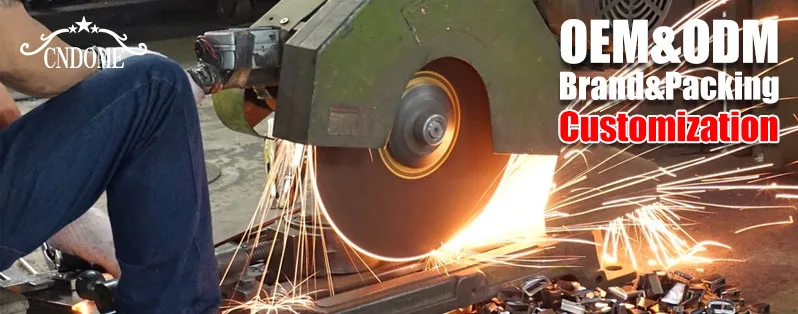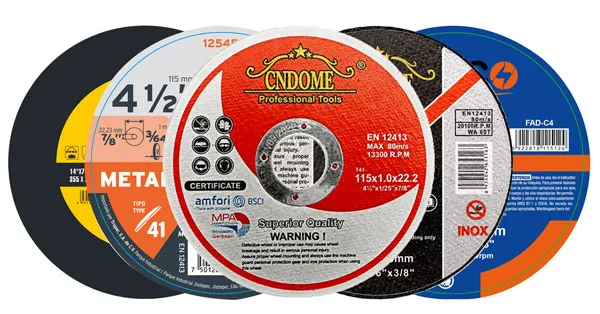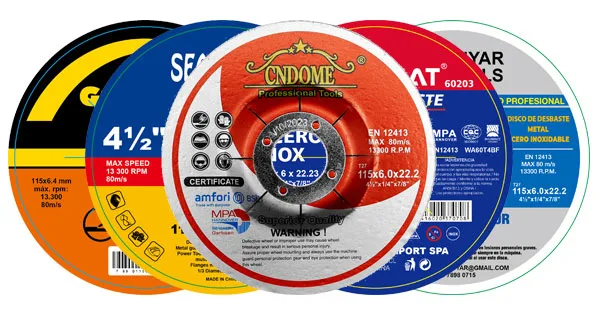Grinding wheels play a crucial role in various industries, from metal fabrication to woodworking. Their effectiveness directly impacts the quality and efficiency of the grinding process. Understanding the factors that influence grinding wheel lifespan is essential for optimizing performance, reducing costs, and ensuring a safer working environment.
Choosing the Right Grinding Wheel:
The journey to an extended grinding wheel lifespan begins with selecting the right wheel for the job. Different materials and applications require specific types of wheels. Factors such as abrasive type, grit size, bond type, and hardness must be considered. A well-matched wheel not only enhances performance but also contributes to a longer lifespan.
Operating Conditions Matter:
Grinding wheel lifespan is significantly influenced by the operating conditions. Excessive pressure, high temperatures, and improper speeds can lead to premature wear and reduce the wheel’s effectiveness. It’s crucial to adhere to manufacturer recommendations regarding speed, feed rates, and pressure to ensure optimal performance and longevity.
Coolant and Lubrication:
Adequate cooling is paramount in grinding operations to prevent overheating and premature wear. Implementing effective coolant systems and lubrication techniques can significantly extend the lifespan of grinding wheels. Coolants not only reduce friction but also help in chip removal, resulting in a cleaner and cooler grinding process.
Dressing and Truing:
Regular dressing and truing of grinding wheels are essential maintenance practices. Dressing removes dulled abrasive grains and exposes fresh ones, rejuvenating the wheel’s cutting ability. Truing restores the wheel’s shape, preventing issues such as out-of-roundness. Both practices contribute to prolonged wheel life and improved surface finish.
Proper Storage and Handling:
Even before the grinding process begins, the way grinding wheels are stored and handled affects their lifespan. Exposure to moisture, extreme temperatures, and contaminants can compromise the wheel’s integrity. Storing wheels in a dry, controlled environment and handling them with care minimizes the risk of damage and ensures consistent performance.
Monitoring and Inspection:
Regular inspection of grinding wheels is crucial for identifying signs of wear, damage, or imbalance. Visual checks, combined with periodic measurements, can help detect issues early on. Implementing a proactive maintenance schedule allows for timely replacement or reconditioning of grinding wheels, preventing unexpected failures.
Investing in Quality Wheels:
While cost considerations are important, investing in high-quality grinding wheels from reputable manufacturers can result in long-term savings. Quality wheels are designed for durability and consistent performance, offering a better return on investment over their lifespan.
Training and Skill Development:
Operators play a vital role in maximizing grinding wheel lifespan. Providing training on proper grinding techniques, machine operation, and maintenance procedures ensures that operators contribute positively to the longevity of grinding wheels.
Conclusion:
Understanding the intricacies of grinding wheel lifespan is key to optimizing efficiency and reducing operational costs. By carefully selecting, operating, maintaining, and monitoring grinding wheels, industries can achieve longer lifespans, leading to improved productivity, better surface finishes, and a safer workplace. As technology advances, staying informed about the latest developments in abrasives and grinding wheel technologies will further enhance the overall efficiency of grinding processes.



